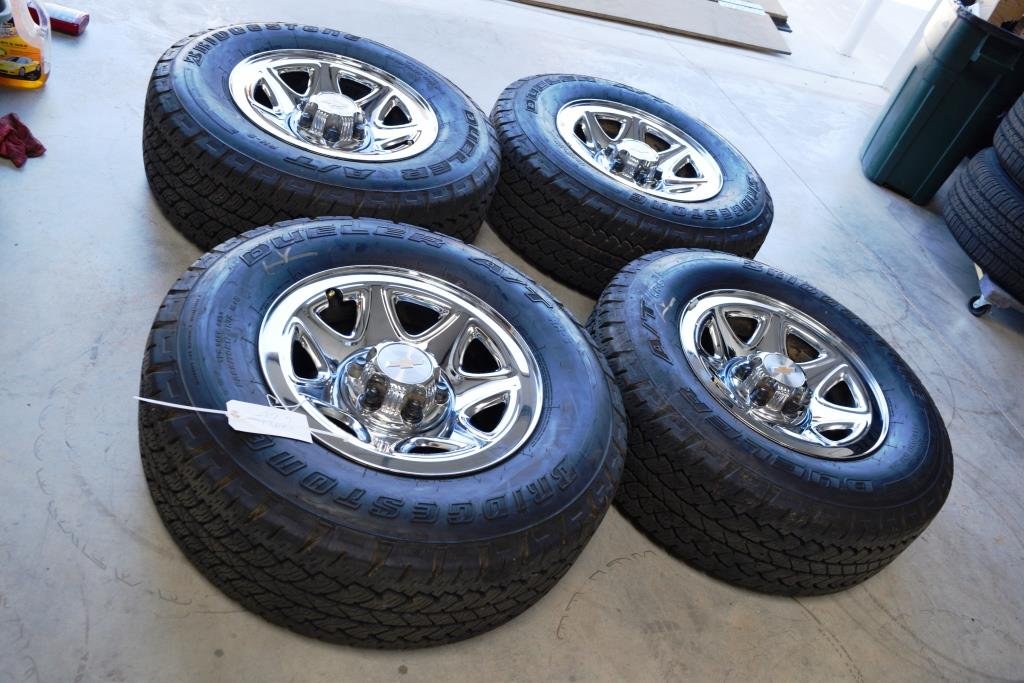inch 5 stud 5X108 flat black steel wheels China Mainland Car Wheels
17 Inch Steel Wheels - A wheel can be a circular ingredient that is supposed to rotate on axle bearing. The wheel is several elements of the wheel and axle which is about the six simple machines. Wheels, at the side of axles, allow heavy objects being moved easily facilitating movement or transportation while supporting a load, or performing labor in machines. Wheels are put to use for other purposes, perhaps ship's wheel, wheel, potter's wheel and flywheel.Common examples tend to be found in transport applications. A wheel greatly reduces friction by facilitating motion by rolling together by using axles. To enable wheels to rotate, a point in time really should be applied to the wheel about its axis, either in terms of gravity or by the use of another external force or torque.The English word wheel originates from the Old English word hweol, hweogol, from Proto-Germanic *hwehwlan, *hwegwlan, from Proto-Indo-European *kwekwlo-, a longer model of the fundamental *kwel- "to revolve, navigate around ".Cognates within Indo-European include Icelandic hjól "wheel, tyre", Greek κύκλος kúklos, and Sanskrit chakra, warriors both meaning "circle" or "wheel ".Precursors of wheels, often called "tournettes" or "slow wheels", were known in your Middle East via the 5th millennium BCE (one of the primary examples was discovered at Tepe Pardis, Iran, and dated to 5200–4700 BCE). We were holding made of stone or clay and secured down having peg with the center, but required effort to turn. True (freely-spinning) potter's wheels were apparently employed in Mesopotamia by 3500 BCE and possibly as soon as 4000 BCE, and then the oldest surviving example, that has been included in Ur (modern day Iraq), dates to approximately 3100 BCE.The best proof of wheeled vehicles appears around the other half within the 4th millennium BCE, near-simultaneously in Mesopotamia (Sumerian civilization), the Northern Caucasus (Maykop culture) and Central Europe (Cucuteni-Trypillian culture), hence the question that culture originally invented the wheeled vehicle remains to be unsolved.The initial well-dated depiction of any wheeled vehicle (here a wagon — four wheels, two axles) is over the Bronocice pot, a c. 3500 – 3350 BCE clay pot excavated in the Funnelbeaker culture settlement in southern Poland.The oldest securely dated real wheel-axle combination, that from Stare Gmajne near Ljubljana in Slovenia (Ljubljana Marshes Wooden Wheel) will now be dated in 2σ-limits to 3340–3030 BCE, the axle to 3360–3045 BCE.Two types of early Neolithic European wheel and axle are known; a circumalpine kind of wagon construction (the wheel and axle rotate together, what i mean Ljubljana Marshes Wheel), thinking that of your Baden culture in Hungary (axle isn't going to rotate). They both of them are dated to c. 3200–3000 BCE.In China, the wheel was certainly present aided by the adoption of your chariot in c. 1200 BCE,although Barbieri-Low[9] argues for earlier Chinese wheeled vehicles, c. 2000 BC.
Related Images with inch 5 stud 5X108 flat black steel wheels China Mainland Car Wheels
Ford Ranger 4x4 XL Plus steel wheels 17 inch
17 Inch Black Steel Rims Wheel Rim 17 Inch Steel
Steel Wheels, Home Delivery Only
Home / Chevy Wheels / Chevy 17 inch chrome wheels OEM Factory wheels

| TITLE: | inch 5 stud 5X108 flat black steel wheels China Mainland Car Wheels |
| IMAGE URL: | http://img.weiku.com/a/001/974/Cheap_custom_17_inch_5_stud_5X114_3_flat_black_steel_wheel_773_1.jpg |
| THUMBNAIL: | https://tse1.mm.bing.net/th?id=OIP.v33zuNyQuwsib-66APFhIQEsEr&pid=Api&w=180&h=181 |
| IMAGE SIZE: | 96155 B Bs |
| IMAGE WIDTH: | 769 |
| IMAGE HEIGHT: | 768 |
| DOCUMENT ID: | OIP.v33zuNyQuwsib-66APFhIQEsEr |
| MEDIA ID: | DFAB7D45436CCD57CA2E0A8917C834CC85660FD7 |
| SOURCE DOMAIN: | weiku.com |
| SOURCE URL: | http://www.weiku.com/products/14516524/Cheap_custom_15_inch_5_stud_5X108_flat_black_steel_wheels.html |
| THUMBNAIL WIDTH: | 180 |
| THUMBNAIL HEIGHT: | 181 |
Related Images with inch 5 stud 5X108 flat black steel wheels China Mainland Car Wheels
Ford Ranger 4x4 XL Plus steel wheels 17 inch
17 Inch Black Steel Rims Wheel Rim 17 Inch Steel
Steel Wheels, Home Delivery Only
Home / Chevy Wheels / Chevy 17 inch chrome wheels OEM Factory wheels
